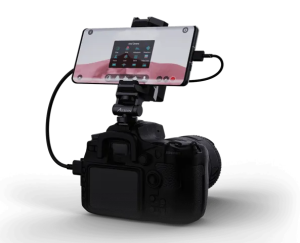In the world of cinematography, storytelling often goes beyond the dialogue and plot. It's also about visual storytelling through the lens of a camera. Two essential techniques in this visual storytelling are rack focus and pull focus. In this article, we will delve into the differences between these two techniques and explore the concept of follow focus in the realm of filmmaking.
Rack Focus: Shifting the Focus Seamlessly
Rack focus, also known as "focus pull" or "depth of field pull," is a cinematic technique that involves shifting the focus from one subject to another within the same shot. This transition is often smooth and subtle, with the primary purpose of directing the viewer's attention to a new focal point in the scene.
Cinematographers use rack focus to emphasize the significance of different elements within a single frame. For example, in a dialogue scene, the focus may shift from one character speaking to another character reacting, highlighting their emotional responses. The seamless transition between focal points helps convey the narrative and guide the audience's perception.
One key aspect of rack focus is that it relies on precise coordination between the focus puller and the camera operator. The focus puller, often a dedicated member of the camera team, adjusts the focus ring on the lens to execute the shift in focus smoothly. what is follow focus.This requires a deep understanding of the scene and effective communication with the camera operator to achieve the desired effect.

Pull Focus: Transitioning Between Subjects
Pull focus is a technique that involves changing the focus from one subject to another, often with a more pronounced and deliberate effect than rack focus. Unlike rack focus, which typically occurs within the same shot, pull focus often involves cuts or scene transitions.
This technique is used to create a dramatic or noticeable change in focus, drawing the audience's attention to a specific element or character in the narrative. Pull focus can be employed to build suspense, reveal a hidden detail, or shift the visual focus to a critical plot point.
Pull focus shots are meticulously planned and executed to ensure the timing and framing align with the storytelling objectives. It may involve adjusting the camera lens manually or using specialized equipment to achieve the desired focus transition.
Understanding Follow Focus
While rack focus and pull focus are techniques that cinematographers use to shift focus, "follow focus" refers to a mechanical device used to precisely control focus adjustments during a shot. A follow focus system typically includes a gear-driven mechanism attached to the camera lens, allowing for smooth and accurate focus changes.
Follow focus is especially valuable when shooting scenes that require consistent focus adjustments, such as tracking a moving subject or maintaining focus on a character as they walk towards or away from the camera. It enhances the cinematographer's ability to achieve professional-looking shots with precise focus control.
Choosing the Right Technique
The choice between rack focus and pull focus, as well as the consideration of follow focus equipment, hinges on the cinematographer's creative vision and the requirements of the scene. Here are some factors to consider:
- Narrative Impact: Rack focus is subtle and seamless, while pull focus is more pronounced and dramatic. Choose the technique that aligns with the narrative's emotional and storytelling goals.
- Scene Complexity: Rack focus is often used within a single shot, while pull focus may involve scene transitions. Consider the complexity of the scene and the desired effect.
- Expertise: Both techniques require skill and coordination. Ensure the camera team, including the focus puller, is proficient in executing the chosen technique.
- Equipment: If the scene demands precise and consistent focus adjustments, consider using follow focus equipment to achieve the desired results.
In conclusion, rack focus and pull focus are essential cinematic techniques that add depth and meaning to visual storytelling. While rack focus seamlessly shifts the focus within a shot, pull focus creates pronounced transitions between subjects. Additionally, follow focus equipment enhances a cinematographer's ability to achieve precise and controlled focus adjustments.
Ultimately, the choice between these techniques depends on the narrative, scene complexity, and the creative vision of the filmmaker. By understanding and mastering these techniques, cinematographers can elevate the visual storytelling in their films and capture the audience's attention and emotions.
